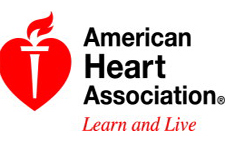Monthly Archives: February 2012
Mr. Dave Nichols; Editor of Easyriders Magazine and his Impressions from the V-Twin Expo
Who doesn’t love FREEBIES, Rally TV does and they found them at the V-Twin Expo
A little Look at the V-Twin Expo 2012, new products for the year to come!
Kabuki
A wise poet once said, “Time spent with cats is never wasted.” Well, you’ll never waste time with Kabuki, a very mellow, non-demanding, gray and white domestic shorthair. This cat is low-maintenance and has a “go with the flow” attitude. Kabuki means a dramatic dance in Japanese, but trust us, he’s not about to start a melodramatic dance on you. He can be timid at first, but one way to get him to warm up to you is to offer him a nice scratch on his fuzzy head. So, if your taste in cat traits leans toward calm, cool, and even a bit meditative, then Kabuki is ready for you. Just come visit this cool cat at Animal Friends in Pittsburgh today!
February Is American Heart Month
Sponsored by the American Heart Association each February, American Heart Month is a time to educate Americans about what they can do to battle the nation’s leading cause of death: cardiovascular disease.
Coronary heart disease is the most common form of cardiovascular disease in the United States and it often first appears as heart attack. In 2010, an estimated 785,000 Americans had a first heart attack and about 470,000 had a recurrent attack. Every 25 seconds, an American will have a heart attack. Every minute, an American will die from one.
You are at higher risk of heart disease if you are:
• A woman age 55 or older.
• A man age 45 or older.
• Or a person with a family history of early heart disease.
Although heart disease is still often perceived as a “man’s disease,” it is the leading cause of death in both men and women. In 2007, heart disease killed 309,821 men 306,246 women.
Another common misperception is that heart disease is an “older woman’s disease.” While heart disease is the leading cause of death in women ages 65 and older, it’s also the second-leading cause of death in women ages 45-64 and the third-leading cause of death in women ages 25-44.
Despite these grim statistics, many women still underestimate their own risk of getting heart disease. A 2009 survey revealed that 69 percent of women are aware that heart disease is their number one killer but that 33 percent of women don’t personally take this threat seriously.
Although American Heart Month is aimed at both men and women, one of its major initiatives each year is The Heart Truth Campaign. In 2002, the campaign introduced the Red Dress as the national symbol for women and heart disease awareness.
This year’s National Wear Red Day is Feb. 3, which provides an opportunity for women to promote awareness by wearing a favorite red dress or Red Dress Pin. In recent years, an increasing number of men at workplaces and elsewhere have expressed their solidarity by wearing a red shirt or tie.
Know the Signs and Symptoms
The American Heart Association, the National Heart, Lung, and Blood Institute, American Red Cross, and the National Council on Aging recently launched a new “Act in Time” campaign to increase awareness of heart attack the importance of calling 911 immediately after the onset of symptoms.
A heart attack may be sudden and intense. But it also can develop slowly with only mild pain or discomfort. Signs that suggest a heart attack is happening include:
• Chest discomfort. Most heart attacks involve discomfort in the center of the chest that lasts more than a few minutes, or that goes away and comes back. It can feel like uncomfortable pressure, squeezing, fullness, or pain.
• Discomfort in other areas of the upper body. Symptoms can include pain or discomfort in one or both arms, the back, neck, jaw, or stomach.
• Shortness of breath. May occur with or without chest discomfort.
• Other signs. These may include breaking out in a cold sweat, nausea, or lightheadedness.
Prevention Strategies
The best way to fight heart disease is to adopt a healthy diet, increase your level of physical activity, and get regular screenings to identify early signs of trouble.
The American Heart Association recommends reading nutrition labels as you make your daily food choices and basing your eating pattern on these recommendations:
• Choose lean meats and poultry without skin and prepare them without added saturated and trans fat.
• Select fat-free, 1 percent fat, and low-fat dairy products.
• Cut back on foods containing partially hydrogenated vegetable oils to reduce trans fat in your diet.
• Cut back on foods high in dietary cholesterol. Aim to eat less than 300 mg of cholesterol each day.
• Cut back on beverages and foods with added sugars.
• Select and purchase foods lower in salt/sodium.
• If you drink alcohol, drink in moderation. That means no more than one drink per day if you’re a woman and two drinks per day if you’re a man.
• Keep an eye on your portion sizes.
New Research Confirms Value of Healthy Lifestyle
In 2011, several new large-scale studies were published in medical journals showing that a healthy diet and regular exercise can significantly reduce the risk of heart attack and stroke.
Among them was a Swedish study of 31,035 heart-disease free women and 5,680 women with a history of heart disease. All the women were ages 49-83.
Researchers used a survey to assess the subjects’ total antioxidant capacity (TAC) based on their intake of antioxidant foods such as fruits, vegetables, whole grains, tea, and chocolate. Antioxidants neutralize the production of cell-damaging free radicals, which cause inflammation, and blood vessel damage and stiffening.
In women with no history of heart disease, the researchers found that those with the highest TAC had a 17 percent reduced risk of stroke compared to those with the lowest TAC.
In women with a history of heart disease, the results were even more dramatic: a 46-57 percent reduced risk of stroke in those with the highest TAC.
“Women with a high antioxidant intake may be more health conscious and have the sort of healthy behaviors that may have influenced our results,” lead researcher Susanne Rautiainen said in a statement. “However, the observed inverse association between dietary TAC and stroke persisted after adjustments for potential confounders related to healthy behavior such as smoking, physical activity and education.”
Another new study by Danish researchers examined the relationship between the intake of omega-3 fatty acids from fish and the development of cardiovascular disease in 49,000 women ages 15-49.
Over the eight-year study period, there were 577 cardiovascular events (heart attacks and strokes), including five deaths in women without any prior diagnosis of cardiovascular disease.
Among the study’s key findings:
• Women who seldom or never eat fish may be increasing their risk of cardiovascular disease by 50 percent or more, according to the first population-based study among younger women.
• Those who ate fish most often, especially fish rich in omega 3 fatty acids, had 90 percent lower risk than those who ate little or no fish.
• The link with cardiovascular disease was evident, even among women in their 30s.
Previous studies of the relationship between the intake of omega-3 fatty acids from fish and the development of cardiovascular disease have focused mainly on men.
“To our knowledge this is the first study of this size to focus exclusively on women of childbearing age,” lead researcher Marin Strøm said in a statement. “The biggest challenge in getting health messages like this across to younger populations is that usually the benefits may not be evident for 30 or 40 years, but our study shows this is not the case. We saw a strong association with cardiovascular disease in the women who were still in their late 30’s.”
Another new study by University of South Carolina researchers suggests that you can reduce your risk of death from heart disease or any other cause by maintaining or improving your physical fitness level even if you don’t lose weight.
The researchers studied 14,345 adult men for 11 years. They found that:
• Maintaining or improving fitness was associated with a lower death risk even after controlling for Body Mass Index (BMI) change.
• Every unit of increased fitness (measured as MET, metabolic equivalent of task) over six years was associated with a 19 percent lower risk of heart disease and stroke-related deaths and a 15 percent lower risk of death from any cause.
• Becoming less fit was linked to higher death risk, regardless of BMI changes.
• BMI change was not associated with death risks.
“This is good news for people who are physically active but can’t seem to lose weight,” lead researcher Duck-chul Lee said in a statement. “You can worry less about your weight as long as you continue to maintain or increase your fitness levels.”
For more information about American Heart Month:


